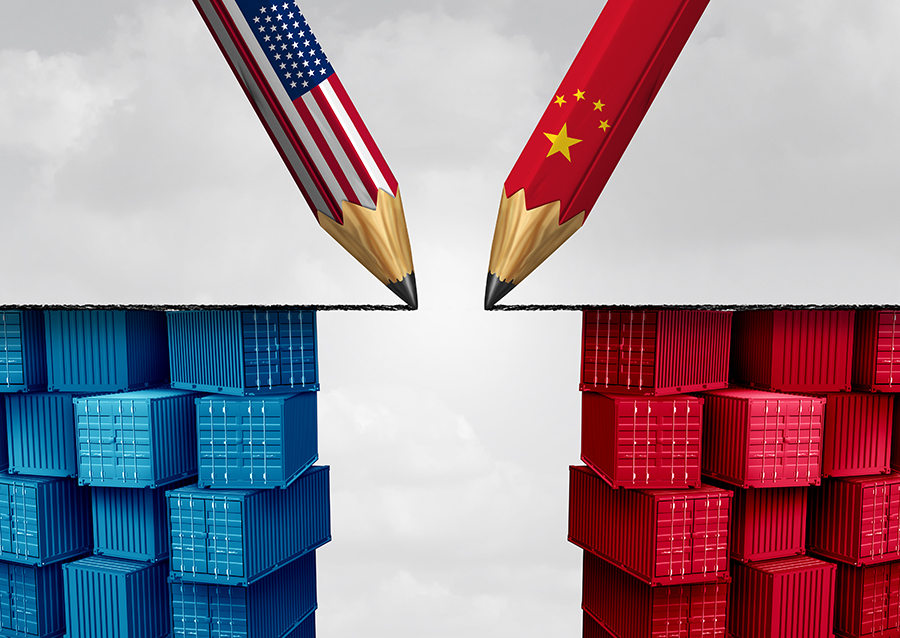
The US and China inked a Phase One trade deal in the ongoing trade war on January 15, canceling the 15% tariffs that were to take effect on December 15 and halving earlier tariffs on $120 billion worth of goods. China agreed to increase its purchases of US goods, particularly agricultural products, in the next two years, and to improve intellectual property rights. The 25% tariffs on $250 billion worth of Chinese imports remain in place and present a potential negotiation tool in Phase Two of trade negotiations. The Phase One trade deal, and the trade war in general, have changed the course of the US-China relationship from one of delicate negotiation to that ruled by Twitter diplomacy.
Negative impacts of the trade war
Although the Trump administration has heralded the Phase One deal as “historic”, experts have pointed out that many of the Chinese concessions were policies that were already under way. China was already in the process of strengthening its intellectual property regime, lifting foreign ownership restrictions, and reducing its trade surplus with the US before the trade war began. Hence, the trade war has not produced meaningful policy results.
Even worse, the 18-month long trade war has also negatively impacted the profitability of American and Chinese firms, forcing them to seek alternative supply chains and face ongoing uncertainty. The conflict has taken its toll on the attitudes of both Chinese and American officials toward the other side. Among the Chinese elite, the Trump administration has been viewed as unstable and unfair, while in the US, the Chinese have been viewed as deceptive and unscrupulous.
Twitter diplomacy
Chinese-American diplomatic relations, which restarted in the 1970s with President Richard Nixon’s journey to China to meet Mao Zedong and were formalized in 1979 with President Jimmy Carter’s granting China full diplomatic recognition, took many years to cultivate. President Bill Clinton launched a policy of “constructive engagement” with China in 1993 and later signed the US-China Relations Act of 2000, which set the stage for China to enter the World Trade Organization in 2001.
The US-China relationship became a heavily economic one, with scores of US multinationals investing directly in China in the 1990s and 2000s in order to take advantage of low labor costs and lax environmental regulations that reduced the cost of manufacturing production. After China’s entrance into the World Trade Organization, the Asian nation became a central hub of the Asian supply chain and a major producer of goods for the US, Europe, and other major economies.
In the 2010s, China expanded its technological capabilities, much to the concern of the US, and took advantage of some foreign joint venture firms under the requirements of technology transfer, increasing Western worries over China’s power and tactics. Under President Barack Obama, the “Pivot to Asia” attempted to move the focus away from the Middle East and Europe and was viewed by some as an endeavor to contain China’s growing power. Behind the scenes, conversations about balancing China’s influence became increasingly common.
Enter Donald Trump, who, as presidential candidate, campaigned against China’s economic influence, particularly through trade, going so far as to claim that China was “raping” the US. As President, Trump was swift to end US-China bilateral economic and trade talks that had been started by Henry Paulson under the George W. Bush administration. He also sought to guide US-China relations through Twitter, which many times broke news before any other media outlet. Trump began 2017 with a tweet on January 2 that stated, “China has been taking out massive amounts of money & wealth from the U.S. in totally one-sided trade, but won't help with North Korea. Nice!” He continued to conduct “Twitter diplomacy” by, for example, announcing new tariffs on August 23, 2019 via the social media platform, stating,
“… China should not have put new Tariffs on 75 BILLION DOLLARS of United States product (politically motivated!). Starting on October 1st, the 250 BILLION DOLLARS of goods and products from China, currently being taxed at 25%, will be taxed at 30%. Additionally, the remaining 300 BILLION DOLLARS of goods and products from China, that was being taxed from September 1st at 10%, will now be taxed at 15%. Thank you for your attention to this matter!”
Months of negotiations between the US and China resulted in very little output, with the US agreeing to lower tariffs in exchange for policies that China, for the most part, already had under way. Through the lens of the Phase One deal, the trade war can be viewed thus far as a paper tiger that provided little benefit to the US. Even more concerning, perhaps, is the fact that years of Twitter diplomacy under the Trump administration have reduced delicate negotiations between the two parties to short, one-sided declarations by the US president.
In sum, it is clear that the US-China relationship has been deconstructed and scrutinized since Donald Trump took office in 2017, and is, as the Phase One non-deal shows, not something to be taken for granted. The progress in trade and economic policy cooperation that had been made before the trade war began has been claimed as a victory by the US, as American officials took what had been a seemingly natural unfolding of cooperative measures and codified them into an agreement that was brought about under duress. In this way, the Phase One trade deal and the trade war in general have forever altered the course of US-China relations, providing the public with an example of how a cooperative relationship can be usurped for political purposes and disrupted for short-term gain.
